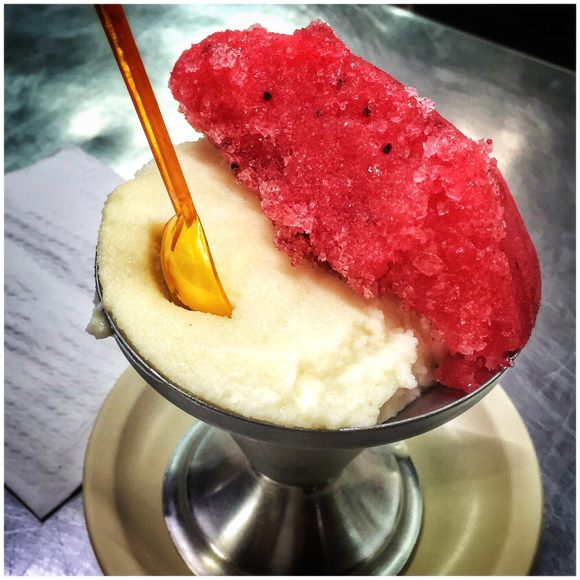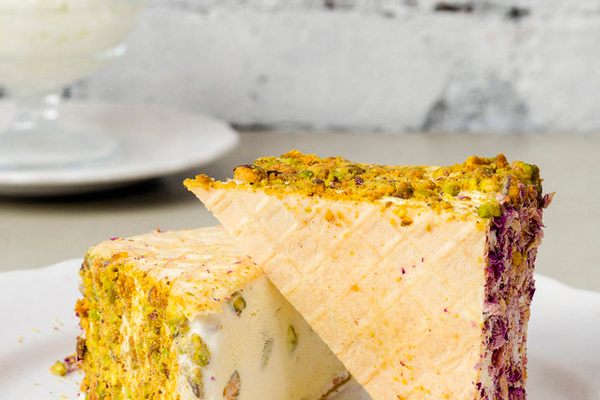Sweets
Prickly Pear Sorbet
A watermelon-and-bubblegum-flavored treat courtesy of Mexico's favorite cactus.
Walking into a Mexican ice cream parlor offers as much of a glimpse of the country’s rich flora as strolling through a fruits and vegetables market. Scan the labels of the nieves (ice cream scoops), and you’ll spot the likes of aguacate (avocado), crema de naranja (orange curd), and even elote (corn). One name, however, usually sticks out: tuna. No, it has nothing to do with the saltwater fish. It’s a uniquely Mexican flavor that is derived from one of the country’s most iconic plants.
Although nieve de tuna is sometimes referred to as “cactus flower ice cream,” this sweet treat is not made from flowers, nor does it use cream. It’s a sorbet made from the fruits of prickly pear cacti, which are known as tunas. Prickly pears are native to South America, and so prevalent in Mexican culture that they are even included on its national flag. Their fruits range in color from green to deep magenta, and are dotted with glochids—groups of tiny, hair-like spines that can cause severe irritation. Beneath their prickly skin, however, lies an inner flesh that is dense, moist, and dotted with small, hard seeds.
The prickly pear’s texture and sweet flavor, added to the fact that it ripens in the summer, make it ideal for turning into sorbets. Nieve de tuna is usually bright red or deep pink, with a lush texture and a sweet, berry-like fragrance. The seeds are left in; they are too hard to bite through, but perfectly safe to swallow. Individual chefs sometimes accent the sorbet’s flavor with a dash of mezcal, tequila, or chili. More often, it is left plain, sometimes infused with a touch of lime juice. Some tasters liken the flavor of nieve de tuna to watermelon and bubblegum, while others detect strong notes of cucumber.
Written By
 Tatiana Harkiolakis
Tatiana Harkiolakis
















